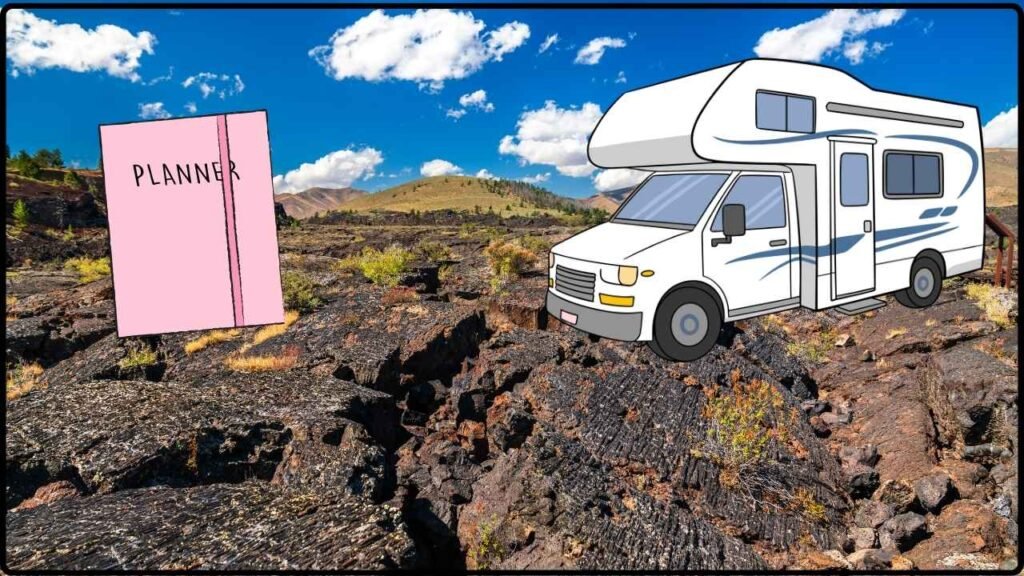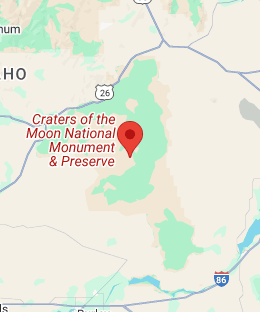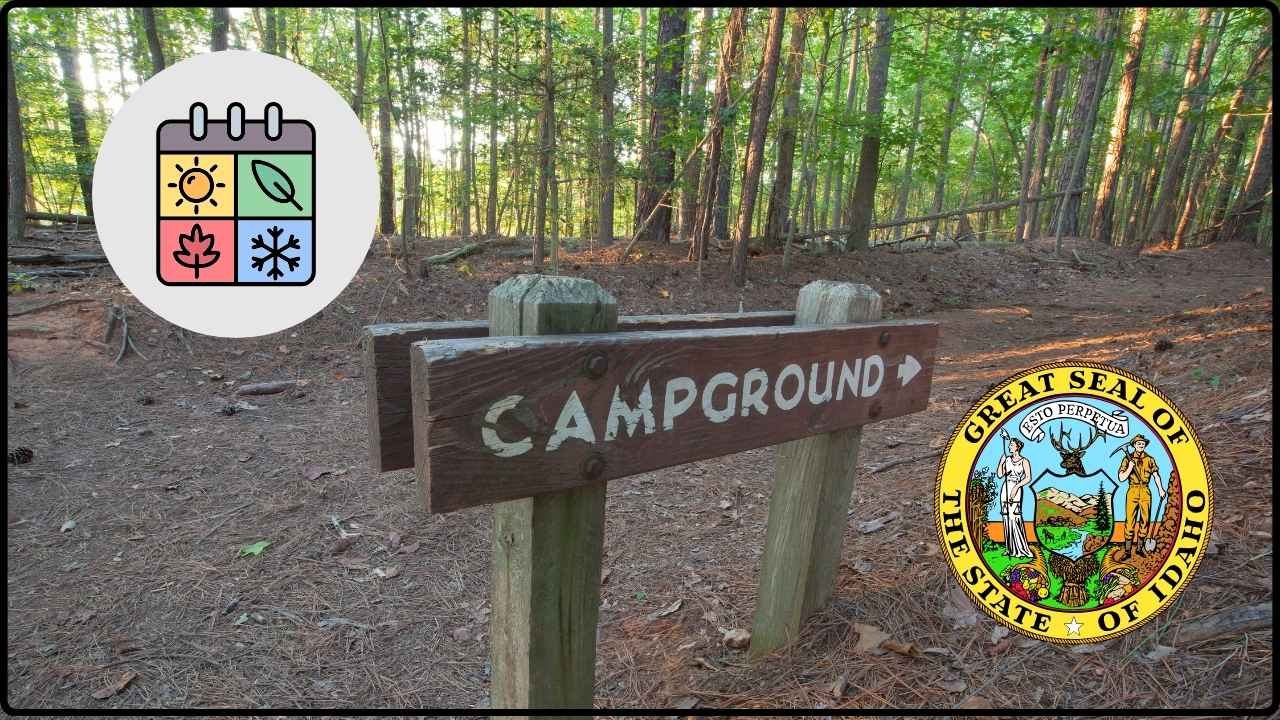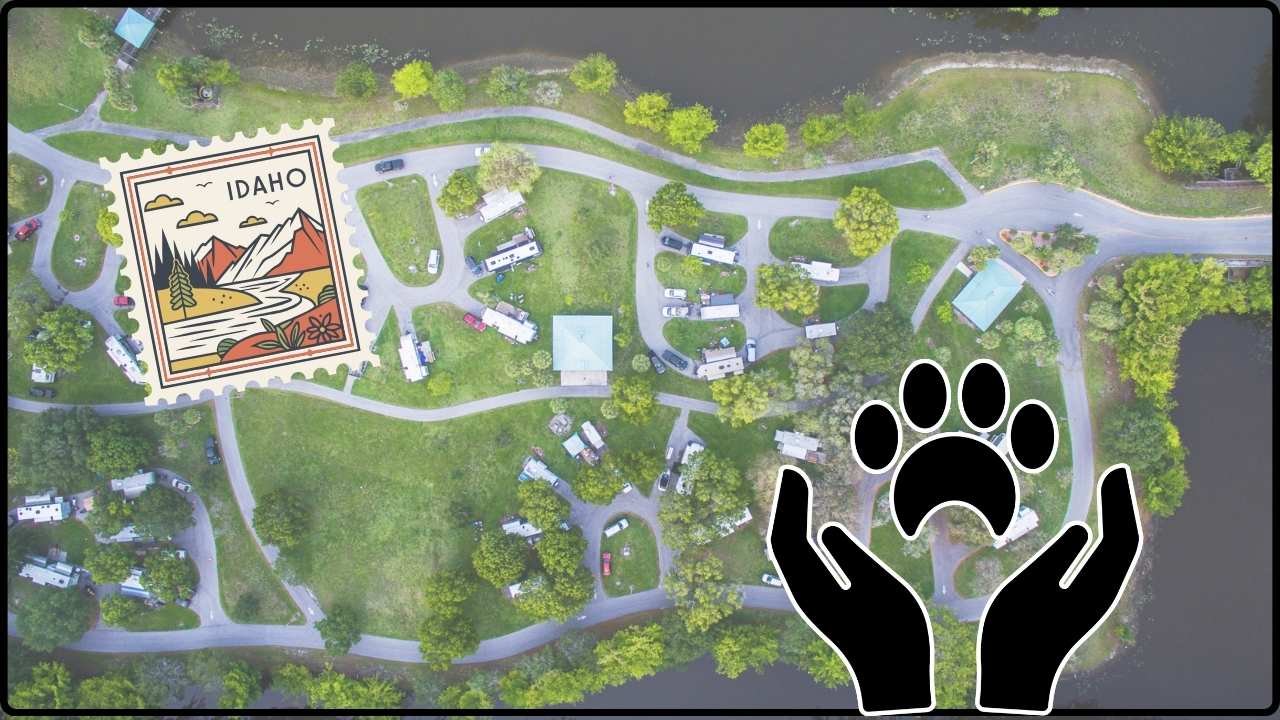
RV Trip Planner: Exploring Craters of the Moon National Monument is like taking a trip to another planet right here in the good ol’ U.S. of A. This vast volcanic landscape in southern Idaho is a wild, ancient lava field that stretches where the Snake River Plain meets the Great Rift Valley. Spanning over 1,117 square miles of lava flows, cinder cones, and rugged desert sagebrush plains, it’s a must-visit for people who love RV adventures and outdoor exploration. Whether you’re new to RV life or a seasoned road warrior, this thorough guide lays down everything you need—packing tips, campsite info, top hiking trails, geological insights, and some insider know-how—to make your trip memorable.
RV Trip Planner
Rolling into the Craters of the Moon National Monument in your RV is a mind-blowing adventure through sprawling lava fields that feel like another world. With epic landscapes, unique volcanic features, trails for all levels, and some of the best stargazing in North America, this park offers an unforgettable journey with plenty of learning opportunities. Prep your rig for dry camping, pack enough water, and respect the fragile environment. For both first-timers and seasoned explorers, Craters of the Moon delivers a truly one-of-a-kind outdoor experience filled with natural wonders and peaceful isolation.
| Feature | Details | Professional/Career Info |
|---|---|---|
| Location | Southern Idaho, Snake River Plain | Managed by National Park Service & Bureau of Land Management |
| Land Size | 1,117 square miles (2,893 km²) | Geological field for earth scientists and eco-tourism pros |
| Campsites | Lava Flow Campground, 42 sites, limited hookups (medical only) | Ideal for outdoor hospitality and park operations careers |
| Trails | Hiking options from easy to challenging: Inferno Cone, Broken Top Loop | Useful for guides, educators, and naturalists |
| Scenic Drive | 7-mile Loop Road | Transportation planning, tour guiding |
| Stargazing | Designated Dark Sky Park | Astronomy outreach and environmental education |
What’s the Lowdown on Craters of the Moon?
Craters of the Moon National Monument and Preserve is managed by the National Park Service and the Bureau of Land Management. This ain’t your typical park. It’s a geologic masterpiece—formed over thousands of years by volcanic eruptions from the Great Rift, a series of deep cracks in the Earth’s crust. The park features over 25 volcanic cones, extensive lava tubes, spatter cones, and tree molds—these are impressions left in lava flows where ancient trees once stood, giving the landscape its otherworldly vibe.
- Size: About 1,117 square miles (2,893 km²), nearly twice the size of Rhode Island
- Elevation: Roughly 5,900 feet above sea level
- Climate: Semi-arid with hot summers and cold winters; summer highs near 85°F, winter lows often below freezing
- Stargazing: Officially an International Dark Sky Park, with insanely clear night skies
The volcanic activity here happened in eight major eruptive periods between roughly 15,000 and 2,000 years ago, punctuated by calm periods where the molten rock would cool and settle. The lava flows cover about 618 square miles (1,600 km²) of the park. This volcanic field is still considered dormant, not extinct, meaning eruptions might happen again someday—just don’t expect one on your trip!
RV Trip Planner: Step-by-Step Guide
Step 1: Getting There and Finding Your Spot
When you roll up in your RV, Lava Flow Campground is where you’ll want to park. There are 42 campsites available on a first-come, first-served basis from May through November. The catch? No water or electric hookups—except one site reserved for medical needs. This means you’ll want your rig ready for dry camping (aka boondocking). Bring batteries, a generator, or solar power if you want to keep the comforts humming.
Big rig? Some sites can handle up to 30 feet; bigger than that might get tricky navigating tight areas. Fuel and supplies are just 20 minutes away in the town of Arco.
Step 2: Must-Do Activities and Trails
Hit the 7-mile Loop Road to start. The drive offers pullouts with jaw-dropping views of the volcanic features—cinder cones, spatter cones, and those eerily beautiful lava tubes.
The park offers trails for every type of hiker:
- Inferno Cone Trail: Short but steep; the summit views are panoramic and totally worth the climb.
- Broken Top Loop: A moderate hike winding through lava formations, great for learning about volcanic geology.
- Devil’s Orchard Trail: Easy-peasy, family-friendly, with fascinating lava tree molds.
- Buffalo Cave: Explore this lava tube with a free permit from the visitor center—don’t forget your flashlight.
- North Crater Trail: Perfect for those wanting to explore less crowded areas.
Step 3: Night Sky and Wildlife Watching
This place is an Official Dark Sky Park, meaning the night skies are pure magic. Lay back, grab your telescope or just your eyeballs, and watch for meteors, distant galaxies, and the Milky Way. It’s a perfect stargazing spot because there’s virtually no light pollution.
During the day, look out for native wildlife like jackrabbits, coyotes, and a variety of desert birds. The fragile ecosystem depends on visitors respecting the land and not feeding or approaching animals.

Step 4: Know the Rules and Stay Safe
Always bring enough water—there’s no potable water at the campsites—and pack sunscreen and hats for sun protection. Here are some other key tips:
- Campground fees are $15 per night June through August, $8 in shoulder seasons.
- Cell service is almost nil, so download maps and resources before arriving.
- Fires allowed only in charcoal grills; wood fires are banned to prevent wildfires.
- Winter camping is allowed for experienced snowshoers with permits from the visitor center.
- Stick to marked trails to protect the fragile volcanic terrain and for your safety.
- Pets are OK in campgrounds but must be leashed; no pets on most trails.
- Permits are required to enter some lava tube caves.
Step 5: Deep Dive Into the Geology
Understanding the geology of Craters of the Moon adds a layer of awe to your visit. The landscape is the result of volcanic activity along the Great Rift, a 52-mile-long fissure system stretching southeast from the visitor center. This rift allowed molten basaltic lava to flood the surface in multiple episodes over the past 15,000 years.
The Snake River Plain itself was shaped by a hotspot currently under Yellowstone, which has migrated over millions of years. As the North American Plate shifted, this stationary hotspot caused massive eruptions that formed the volcanic terrain here before moving eastward.
The types of lava here include:
- Pahoehoe: Smooth, ropy lava that flows easily.
- Aa: Rough, jagged lava that cools in sharp chunks.
- Cinder cones: Steep, conical hills made of volcanic debris.
- Spatter cones: Formed from blobs of molten lava thrown into the air that pile up near the vent.
- Lava tubes: Analogous to underground rivers of lava, now hollow tunnels.
All these features offer a classroom-worthy geology lesson for curious visitors and professionals alike.
Step 6: Extra Cool Stuff for the Long Haul Traveler
For those looking to stay longer or dive deeper:
- Volunteer opportunities during peak season involve helping with trail maintenance and visitor services.
- Ranger-led programs explain the natural history, geology, and Native American heritage.
- Nearby attractions include Shoshone Falls, often called the “Niagara of the West,” and refreshing hot springs perfect for soaking sore muscles after a day of hiking.

Boondocking in Idaho 101: The Ultimate Guide to Free Camping
Idaho BLM Camping Rules Explained: The 14-Day Stay Limit and More










